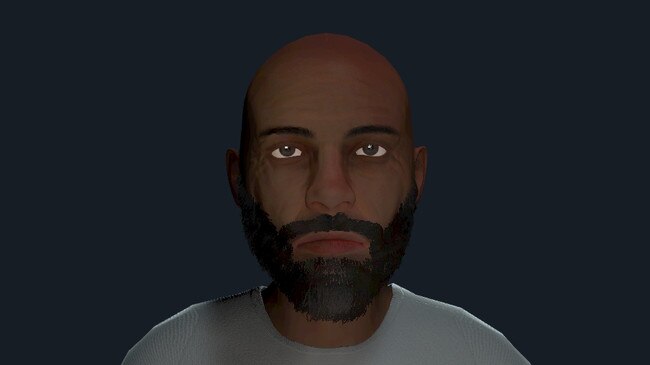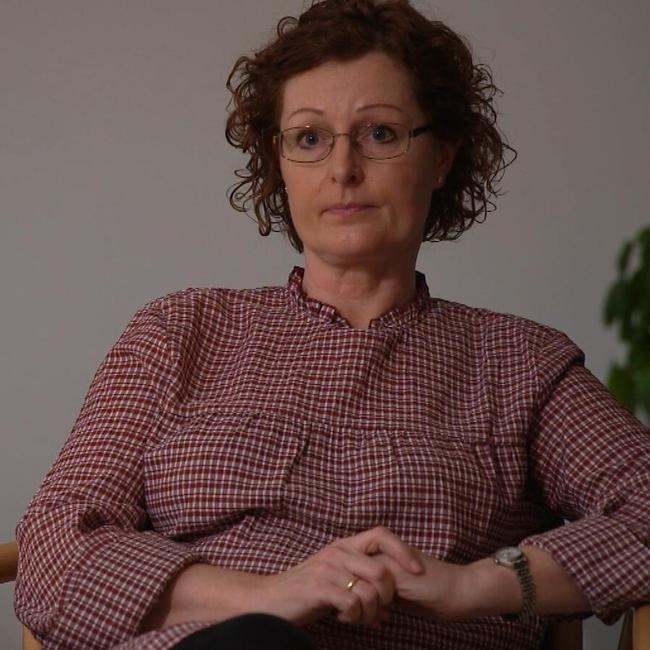3D animation software used in video games and movies helping to treat schizophrenia patients
Virtual reality is being used to bring the voices in schizophrenia patients’ heads to life. See how it works.
National
Don't miss out on the headlines from National. Followed categories will be added to My News.
Exclusive: The terrifying voices inside a schizophrenic patient’s head are being brought to life through video-game style avatars as part of a revolutionary new treatment.
Allowing patients to “meet” and treat the hallucinatory voice using the virtual reality technology is proving three times more successful than traditional psychotherapy, research in Denmark Canada and the UK has shown.
The first Australian trial of the tech — run by Swinburne University and funded by the National Health and Medical Research Council — is due to start enrolling 200 participants in July.

Swinburne psychologist Associate Professor Neil Thomas who is leading the trial said it is currently hard to treat the patients experiencing voices.
This is because they are a very private experience for the person and it is rare for the experience to happen when they are in the room with the therapist.
“So we’ve used 3D animation software that would be used in video games and in movies to create an avatar which represents the voice so the avatar can be presented on a computer screen, or can be viewed in with a virtual reality headset and is a representation of what the person would imagine their voice to be like,” he said.
“The other element is using voice modulation software to recreate the sound of the voice so it sounds as close as possible to the experience that the person has.”

During an appointment the therapist uses the technology to role play “the voice” in therapy sessions.
This gives the patient the opportunity to act out responding to the voice, standing up to it and learning how to control it, Associate Professor Thomas said.
“The feedback that we get from people is that they are surprised themselves with how vivid this experience is, how much it sort of recreates the feelings that they get when they’re experiencing hearing voices. So that can be very helpful for people,” he said.
Some patients found it beneficial to play the voice of their relatives to give them a better understanding of the mental suffering they were going through, he said.
“Their voice will be talking to the person or about them and be criticising what the person is doing, might be calling the person names, might be flattening them. So it is a very frightening experience for somebody to have,” he said.

Up to eight in 10 people suffering with schizophrenia will experience a voice in their head and it is also common in people who have experienced childhood trauma, Associate Professor Thomas said.
The current standard treatment for the condition is an antipsychotic medication along with cognitive behavioural therapy over six to nine months which eliminates the voice in only around one in three people.
Under the virtual reality treatment, medication will still be used but the progress is much faster.
Patients will receive seven 50 minute sessions — one a week — using the virtual reality tools in conjunction with a therapist.
“If we compare the effect sizes or the amount of reduction we get in the severity of somebody’s voices, we’re getting three times the magnitude of reduction with using this avatar based therapy compared with standard treatment,” he said.

The Australian trial will put these results to the test with 100 people in the trial using the virtual reality treatment and 100 not receiving it.
Although the trial is being run from Swinburne University in Melbourne, people from all over Australia can take part using telehealth, Professor Thomas said.
Virtual reality is also being used overseas to treat anxiety conditions such as fear of spiders, aeroplanes and social interaction.
Danish mental health nurse Vibeke Skovgaard, who works with patients using the VR therapy, said she was amazed at how they gained control over the voices through a three step process.
“The patient experiences that they can talk to the avatar and that the avatar starts to listen,” she said.
The patient learned how to stand up to the voice and using phrases like “my mother says that I’m very good at being a friend to people so why are you talking to me in this way”.
In the final sessions, the patients makes clear to the avatar what kind of relationship they want to have in the future.

“Some patients say I don’t want you to leave my life, but I want you to be quiet when I’m out amongst other people because I want to be able to talk freely with them without you being there and you and I can agree that we can talk when I get home,” she said.
“Other patients say that I will call you and when I want to talk to you otherwise I want you to be quiet because I don’t need to be there to control me anymore.”
As a therapist, she was stunned at how successful the therapy was but it didn’t work on everyone and patients had to experience a certain level of anxiety when hearing the voice to achieve a breakthrough.
“We have experienced that patients with severe cognitive deficits due to their schizophrenia cannot benefit from the treatment since they can’t remember what happened during the earlier,” she said.





